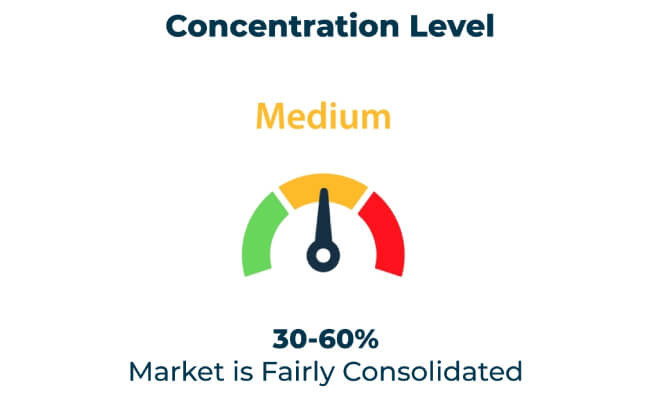The straw market is experiencing rapid growth due to industries and consumers looking for a safer and more environmentally friendly, reusable, and biodegradable alternative. Driven by the call worldwide to reduce singleuse plastics, demand for sustainable alternatives continues to rise in straws made from paper, metal, and bamboo. The global market for straws is likely to reach USD 35.7 billion by 2035, with a CAGR of 4.3%.
| Attribute | Details |
|---|---|
| Projected Value by 2035 | USD 35.7 billion |
| CAGR during the period 2025 to 2035 | 4.3% |
In this respect, companies are coming up with innovative designs and customizable variations that ensure their productions meet environmental safety standards to meet the needs of a wide spectrum of consumers. One of the best ways the straw market can contribute to sustainability is by the promotion of waste reduction and support towards sustainable lifestyles.
Explore FMI!
Book a free demo
Summary
The SWOT analysis of the key players in the straw market displays their strengths and strategies. Aardvark Straws, Huhtamaki, and Biopak are key players that have promoted innovative, green, and customercentric solutions that result in growth. Challenges like a high cost of production and market competition bring opportunities for diversification and technology upgrading.
Huhtamaki
Huhtamaki is one of the leading companies in the production of highquality and sustainable paper straws. Its global reach and focus on ecofriendly materials strengthen its market leadership. However, raw material price volatility poses challenges. Expanding into emerging markets and innovating with new designs present significant growth opportunities.
Aardvark Straws
Aardvark Straws leads with the sturdy, tailormade paper straws. Advanced manufacturing capabilities along with a robust relationship with the customer will ensure an edge over competitors. The insignificant market plays in some areas will be a drawback, but offering solutions on niche markets may present opportunities.
Biopak
Biopak is acknowledged for efforts toward greener solutions. Company strengths include new design and environmentalism. Its major disadvantage remains its very high cost of production; however, increased demand for environmentfriendly products opens tremendous opportunities.
| Category | Market Share (%) |
|---|---|
| Top 3 Players | 14% |
| Rest of Top 5 Players | 08% |
| Next 10 Players | 07% |
Type of Player & Industry Share
| Type of Player | Market Share (%) |
|---|---|
| Top 10 Players | 29% |
| Next 20 Players | 48% |
| Remaining Players | 23% |

Year on Year Leaders
Africa, Southeast Asia, and Latin America have much growth potential. Greater awareness of plastic pollution and an increasing need for sustainable products stimulate the demand for innovative straw products. Those who adapt to local rules and regulations, while being priced competitively, will benefit most.
In-house vs. Outsourced Manufacturing
Summary
Straw market diversifies regional trends widely whose key drivers are sustainability goals, urbanization, and consumer preferences. Thus, if the manufacturer's strategies are aligned with those of the region, growth opportunities will be maximized.
| Region | North America |
|---|---|
| Market Share (%) | 40% |
| Key Drivers | Stricter plastic bans and sustainability focus. |
| Region | Europe |
|---|---|
| Market Share (%) | 30% |
| Key Drivers | Leadership in eco-friendly initiatives. |
| Region | Asia-Pacific |
|---|---|
| Market Share (%) | 20% |
| Key Drivers | Expanding takeaway and urbanization trends. |
| Region | Other Regions |
|---|---|
| Market Share (%) | 10% |
| Key Drivers | Growth in emerging markets. |
The market for straws will expand further with the improvement of biodegradable materials, reuse, and entry into the international market. The leaders in the industry will be those companies that have sustainability and customization as their primary focus.
| Tier | Key Companies |
|---|---|
| Tier 1 | Huhtamaki, Aardvark Straws, Biopak |
| Tier 2 | Vegware, Eco-Products |
| Tier 3 | Simply Straws, Greenmunch |
The straw market is expected to grow further because industries and consumers are focusing on sustainability and functionality. Companies that focus on innovation, ecofriendly designs, and market expansion will shape the future of this dynamic market. Collaboration with food, retail, and takeaway sectors will unlock further opportunities for growth.
Key Definitions
Methodology
This report is based on primary research, secondary data, and expert opinions. Findings are validated with interviews from industry professionals and end users to ascertain accuracy and reliability.
Market Definition
This involves producing and using them for various purposes, ecofriendly, reusable, and biodegradable straws. The market focuses on innovation, sustainability, and functionality.
Growth in demand for ecofriendly and functional beverage accessories.
The global market for straws is likely to reach USD 35.7 billion by 2035, with a CAGR of 4.3%.
Huhtamaki, Aardvark Straws, and Biopak are key players.
High production costs, market competition, and regulatory compliance are key challenges.
The opportunities exist in biodegradable materials, reusable straw technologies, and entering into emerging markets.
Tape Banding Machine Market Overview - Demand & Growth Forecast 2025 to 2035
Takeaway Containers Market Report - Key Trends & Forecast 2025 to 2035
PVC Packing Straps Market Report – Key Trends & Forecast 2025 to 2035
Reusable Packing Market Analysis – Size, Share & Forecast 2025 to 2035
Printed Boxes Market Analysis – Trends, Demand & Forecast 2025 to 2035
Polystyrene Packaging Market Analysis - Size & Growth Forecast 2025 to 2035

Thank you!
You will receive an email from our Business Development Manager. Please be sure to check your SPAM/JUNK folder too.